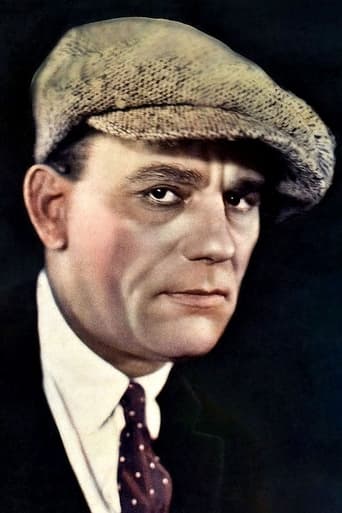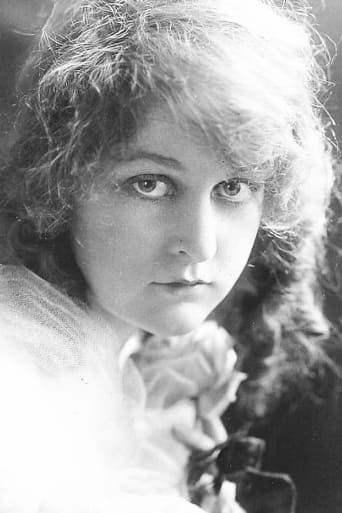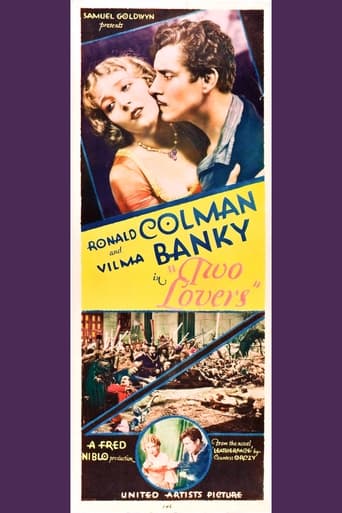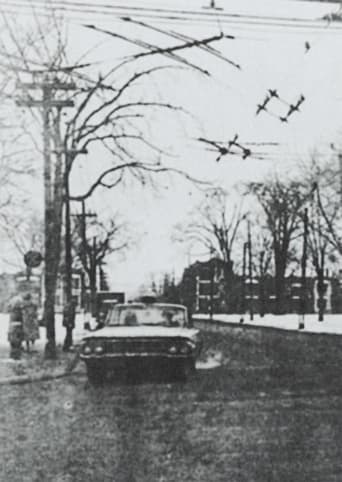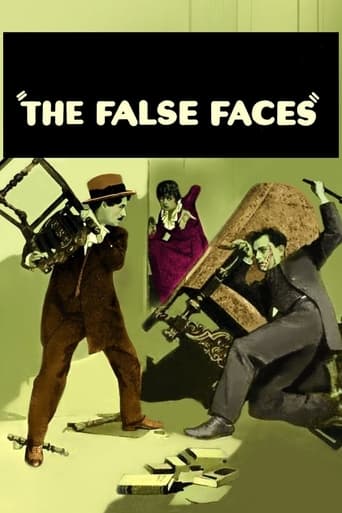
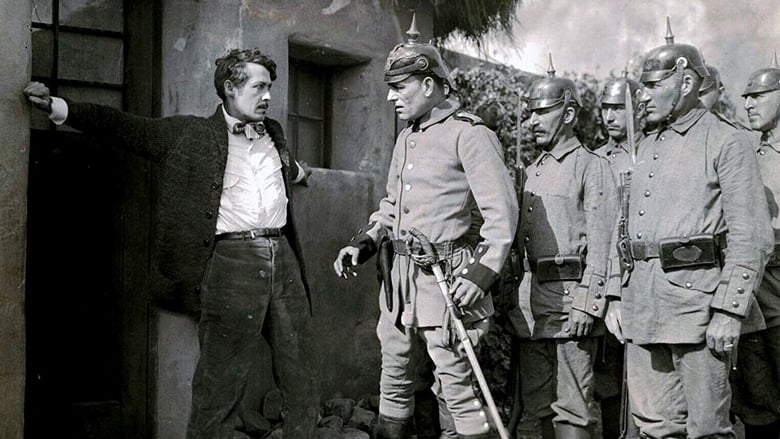
The False Faces (1919)
During World War I, a professional thief known as The Lone Wolf is assigned to steal a cylinder with important information from behind the German lines and bring it to Allied intelligence headquarters. However, German agents set out to stop him, headed by the man who was responsible for the death of the thief's sister.
Watch Trailer
Cast


Similar titles
Reviews
A film with more than the usual spoiler issues. Talking about it in any detail feels akin to handing you a gift-wrapped present and saying, "I hope you like it -- It's a thriller about a diabolical secret experiment."
The best films of this genre always show a path and provide a takeaway for being a better person.
The movie turns out to be a little better than the average. Starting from a romantic formula often seen in the cinema, it ends in the most predictable (and somewhat bland) way.
One of the film's great tricks is that, for a time, you think it will go down a rabbit hole of unrealistic glorification.
The story for "The False Faces" is taken from a novel by Louis Joseph Vance based on a character he created called 'The Lone Wolf'. Films about WW1 made during WW1 are interesting. The opening stages of Irvin Willat's "The False Faces" hark forward six & eleven years to the battle sequences in "The Big Parade" & "All's Quiet on the Western Front" respectively. Indeed both King Vidor & Lewis Milestone must've viewed portions of this film. 1919 was a break out year for Lon Chaney with "The Wicked Darling", "Victory", and the hugely successful "The Miracle Man". "The False Faces" is Chaney's first film of 1919 so it was probably made while WW1 was still going on(before November 11 1918). The film actually stars Henry B. Walthall as a Sidney Reilly type spy, 'The Lone Wolf'. Quite possibly a double agent. The movie is a potpurri of a spy cheating officials and officials cheating the spy. Director Willat has scenes that occur on board a real passenger liner and later in a submarine. Amazing that Willat could obtain the use of a sub for his film. Chaney plays a man called Ekstrom in several disguises & whom 'The Lone Wolf' harbors a personal vengeance against. Ekstrom is a German w/spiked helmet, an officer on an ocean liner, a sub captain and a shaven adventurer in drawing room back on shore. An actress called Mary Anderson plays the sole female character in this film. A popular and pretty actress in the silents, she's all but forgotten today. Irving Willat's brother, Edwin Willat, is the cinematographer. The print of this film survives generally in good condition but some of the intertitles are so blacked out that they can't be read. Grapevine video actually replaced key titles so to hold the viewer to the story. The latter part of the film tends to get melodramatic. But the highlight scenes are on a real passenger liner(makes some think of the Titanic & Lusitania) and a real submarine with scenes that hark forward to 'Destination Tokyo' and 'Das Boot'. Most films about WW1 made during WW1 tend to be propaganda or over the top grotesque comedies aimed at Germans. This movie is a little bit of both but alas one of the more tamer films compared to others.
False Faces (1919) ** 1/2 (out of 4) Henry B. Walthall plays a spy known as The Lone Wolf who must sneak behind enemy lines and captures a cylinder so that he can get it back in Allie hands but it won't be easy because of a committed German (Lon Chaney). This film runs a short 76-minutes but it feels much longer because the film tries to do so much in so little time that the thing grows tiresome as it goes on. For the majority of the film we see The Lone Wolf trying to track down what he needs as it keeps getting passed from one set of hands to another and at times who has the item is rather confusing. Another problem is that some of the sets (just take a look at the submarine) are poorly done and aren't too believable. What does work is some very good use of tint, which helps bring the film to life somewhat. Another aspect that works is the use of ghosts to show the torment of one of the characters but this too turns somewhat sour when a ghost is killed by a gunshot. This here doesn't make too much sense no matter how you look at it. I was surprised at how well Walthall handled the role and thought he did a very good job with it. Fans of Chaney might be disappointed that he has very little to do here but he really sticks out with an intense performance. The film, once thought lost, was eventually found and remastered but a lot of the intertitles are very hard to read.
'False Faces' (there's no 'THE' in the film's title) is being marketed on video as a Lon Chaney movie. Buyer beware! Chaney plays a small role, having far less screen time than Henry Walthall and Mary Anderson. That wouldn't be bad if this were a good film. 'False Faces' LOOKS like a good film, possessing elaborately tinted colour sequences and some highly artistic intertitles, sometimes superimposed on live backgrounds. Many of these intertitles are so elaborate that they're difficult to read. (But we can clearly read the name of producer Thomas Ince in SIX different places in the credits: Ince was notorious for this shenanigan.) A far worse drawback is that this film has a plot which is both dull and extremely overwrought.'False Faces' exploits the events of the Great War, and the movie's sympathies are very clearly drawn. The war is characterised as 'the armies of civilization beating back the wolf-hordes of a blood-crazed king'. Hmm, guess which side is which. All the Americans are extremely virtuous and resourceful, and there's no mention at all of the British (whose B.E.F. Tommies had far higher casualties than America's doughboys, and who were in the war longer). All the Germans are sub-human 'Huns', as the intertitles cry them. Don't mistake me: I quite agree that the Allies were (and still are) the good guys, but I'm deeply annoyed at attempts to demonise villains like the Kaiser or Hitler or Osama bin Laden. It's a cheap easy tactic to depict such people as inhuman monsters, because we don't want to contemplate why human beings could be capable of such hideous acts.Henry Walthall, a very dull and stolid actor, plays American super-agent Michael Lanyard, alias the Lone Wolf. When I saw the name 'Lanyard', I got ready to make puns about Walthall's hero stringing us along, but this movie ain't worth the trouble.The plot is downright incoherent, and features one of the most blatant examples I've ever seen of a 'McGuffin': a cylinder, allegedly containing some sort of microform, that's constantly passed back and forth among the characters. Doesn't mean a bloody thing, but everybody wants it. By the way, although Hitchcock popularised the term 'McGuffin' (which he credited to Angus McPhail), he did not create the concept that it represents. Pearl White, the queen of silent serials, had a McGuffin in many of her films, but she called it a 'weenie'.Sure does LOOK a good film, though. Near the very beginning, there's an impressive dissolve shot in which several of the male cast members (including Chaney) are shown as disembodied heads, who suddenly sprout false whiskers that look very realistic. But this is just a camera stunt that doesn't advance the story. Much more impressive is a later sequence in which a German submarine commander (allegedly the man who sank the Lusitania) is haunted by the ghosts of his victims. First, some tiny people materialise on his table. Next, he sees children's corpses floating outside his porthole. When a ghost materialises in front of the hatchway, he shoots it ... and the ghost falls over. (This must be the only ever film in which bullets stop a ghost.) As in Rex Ingram's 'The Conquering Power' (which may have been influenced by this movie), it's clear that the 'ghosts' are manifestations of the villain's guilt complex rather than actual supernatural spooks. This sequence in 'False Faces' is excellent, but has a contrived payoff. All the scenes aboard the submarine feature spacious roomy sets, with high ceilings (not overheads), and nothing belayed nor bolted down. And if you're aboard a submarine and you want to sink it, just open the convenient hatch in the floor. Deck? No, this one is definitely a floor. The hatchways are regular doors, the overheads are regular ceilings. If the script didn't say this was a submarine, I'd think we were on a movie set. Somebody open the window.Lon Chaney is my favourite actor, but -- unlike many people I've met whose Chaneyphilia borders on fanaticism -- I'm capable of admitting that Chaney sometimes gave a bad performance. He gives an utterly lousy one here, but that's the fault of the script and direction. Cast as a German spymaster, Chaney isn't allowed to portray the role as a human being. The character is written as a one-dimensional Hun, so that's how Chaney plays it. This film was made shortly before Chaney's stardom, when he was a hard-working utility actor who grabbed every role he could get.The climax is so utterly bad that it's laughable, with Walthall slathering make-up on the semi-conscious Chaney. This scene puts Henry Walthall alongside Ford Sterling (in 'He Who Gets Slapped', a much better movie) as one of the few actors who had the great honour to apply make-up to Lon Chaney. Walthall and Chaney had a genuinely affecting rapport together on screen in 'The Road to Mandalay' (in which they played brothers), but not here. I realise that Chaneyphiles will want to see every Lon Chaney movie they can find; fair enough, but make 'False Faces' a very low priority on your list of the Thousand Faces of Lon Chaney. I'll rate this dull movie only one point in 10, for that atmospheric ghost sequence.
This is a forgotten film for the most part, but not hard to buy online. The late great Henry B. Walthall (best known as The Little Colonel from "Birth of a Nation") plays dashing Michael Lanyard, aka "The Lone Wolf" whose thieving ways have made him a target for the authorities all over the world.His skills as a thief enable him to get around several very sticky situations, as you will see in the film. The main storyline revolves around Lanyard's pursuit of Karl Eckstrom (played by Lon Chaney) who led a raid that killed Lanyard's sister and nephew. His seeking of revenge takes him from the battlefield of The Great War (WW1), in which he dodges the searchlights by dropping "dead" when the lights hit him, to the U.S.S. Assyrian, where he meets Cecilia Brooke and Lt. Thackeray, who entrust him with a cylinder containing important information which the enemy is willing to kill to get. Lanyard is ambushed by Eckstrom and Co., where the cylinder is stolen by Eckstrom, and Lanyard thrown overboard just prior to the ship's sinking. It is interesting to watch Walthall floating in the water seemingly to his death, when very slowly a submarine surfaces beneath him! This submarine was the cause of the ship's sinking, and its drunken captain was also the man behind the sinking of the Lusitania. Needless to say, Lanyard finds himself cracking into the submarine's safe and stealing money while left alone for a brief moment, then bearing witness to the murder of the captain. He escapes to New York, where he catches up with Cecilia Brooke (among the survivors of the Assyrian) and Eckstrom, which builds to a very interesting twist in which Eckstrom gets his just desserts, and Lanyard gets the girl.All in all, this is a wonderfully action-packed film where you get to see Chaney without makeup for the most part, and Walthall in one of his best roles of his silent career. There are a few laughs here and there, a lot of suspense, and a great cat-and-mouse game is played between the two main characters. If you're a silent film buff, you must see this!



